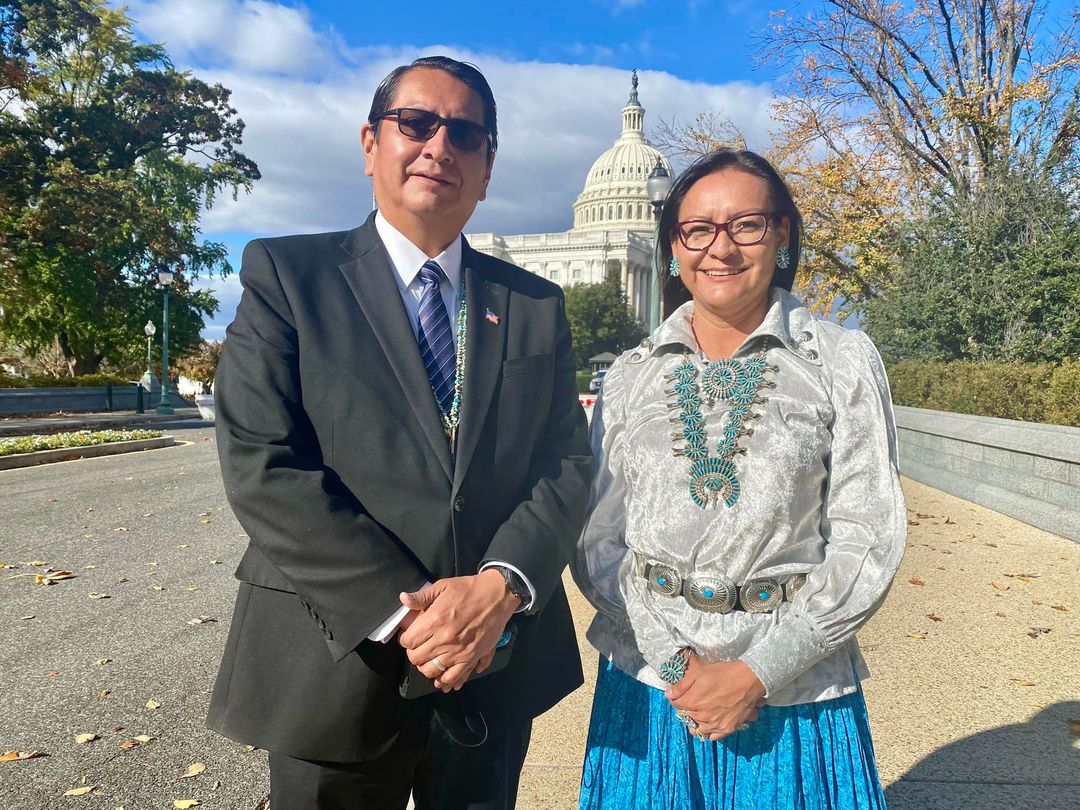
- Details
- By Native News Online Staff
Navajo Nation President Jonathan Nez, joined by his wife, First Lady Phefelia Nez, spoke about the COVID-19 pandemic on the Navajo Nation on Tuesday during the last day of the White House Tribal Nations Summit.
At one point during the first months of the pandemic, the Navajo Nation served experienced some of the COVID-19 cases in the world. Since it began reporting the number of COVID-19 cases and deaths, on March 17, 2020, the Navajo Nation has reported almost 38,500 cases and over 1,500 deaths on the country’s largest Indian reservation.
Want more Native News? Get the free daily newsletter today.
“A modern-day monster known as COVID-19 entered our communities —impacting the lives of many of our elders, our children, frontline warriors, and many others throughout the world. The onset of COVID-19 forced us to close our schools, government offices, and it magnified the lack of basic infrastructure on the Navajo Nation and all tribal communities,” Nez said. “Some of you may have seen photos of our Navajo children with their grandparents on hills and mountains with their laptops in order to gain access to the internet so they could participate in virtual learning. Unfortunately, these situations were all too common,” Nez said.
Nez reported that the Navajo Nation received $714 million in CARES Act funds, which allowed over 700 Navajo families to receive electricity, over 300 off-grid solar installations, 117 water and waste water upgrades and replacements, 105 water cistern system installations, 30 waterline connections to homes, 139 broadband installations and upgrades, and four new broadband/cell phone towers.
Approximately half of the $714 million was distributed to the Navajo people in the form of hardship assistance. Nez pointed out that more long-term improvements could have been completed using CARES Act funds, if not for the initial deadline of December 2020 and the federal requirements and clearances needed to advance more projects.
With the American Rescue Plan Act funds, the Nez-Lizer Administration presented a plan that would provide at least $780 million for water, powerlines, broadband, housing, and bathroom additions, $350 million for direct services in communities related to education, health care, mental health, social services, detox centers, senior centers, economic development, and tourism. $220 million would be allocated for chapter projects and $100 million for enterprises. Approximately $207 million has already been approved for another round of hardship assistance for enrolled citizens of the Navajo Nation.
More Stories Like This
Native News Weekly (August 25, 2024): D.C. BriefsUS Presidents in Their Own Words Concerning American Indians
South Dakota Hotel Owner Found Liable for Discriminating Against Native Americans
Monday Morning (December 22, 2025): Articles You May Have Missed This Past Weekend
Read What Our Year-End Campaign Donors Are Saying
Help us defend tribal sovereignty.
At Native News Online, our mission is rooted in telling the stories that strengthen sovereignty and uplift Indigenous voices — not just at year’s end, but every single day.
Because of your generosity last year, we were able to keep our reporters on the ground in tribal communities, at national gatherings and in the halls of Congress — covering the issues that matter most to Indian Country: sovereignty, culture, education, health and economic opportunity.
That support sustained us through a tough year in 2025. Now, as we look to the year ahead, we need your help right now to ensure warrior journalism remains strong — reporting that defends tribal sovereignty, amplifies Native truth, and holds power accountable.
 The stakes couldn't be higher. Your support keeps Native voices heard, Native stories told and Native sovereignty defended.
The stakes couldn't be higher. Your support keeps Native voices heard, Native stories told and Native sovereignty defended.
Stand with Warrior Journalism today.
Levi Rickert (Potawatomi), Editor & Publisher

